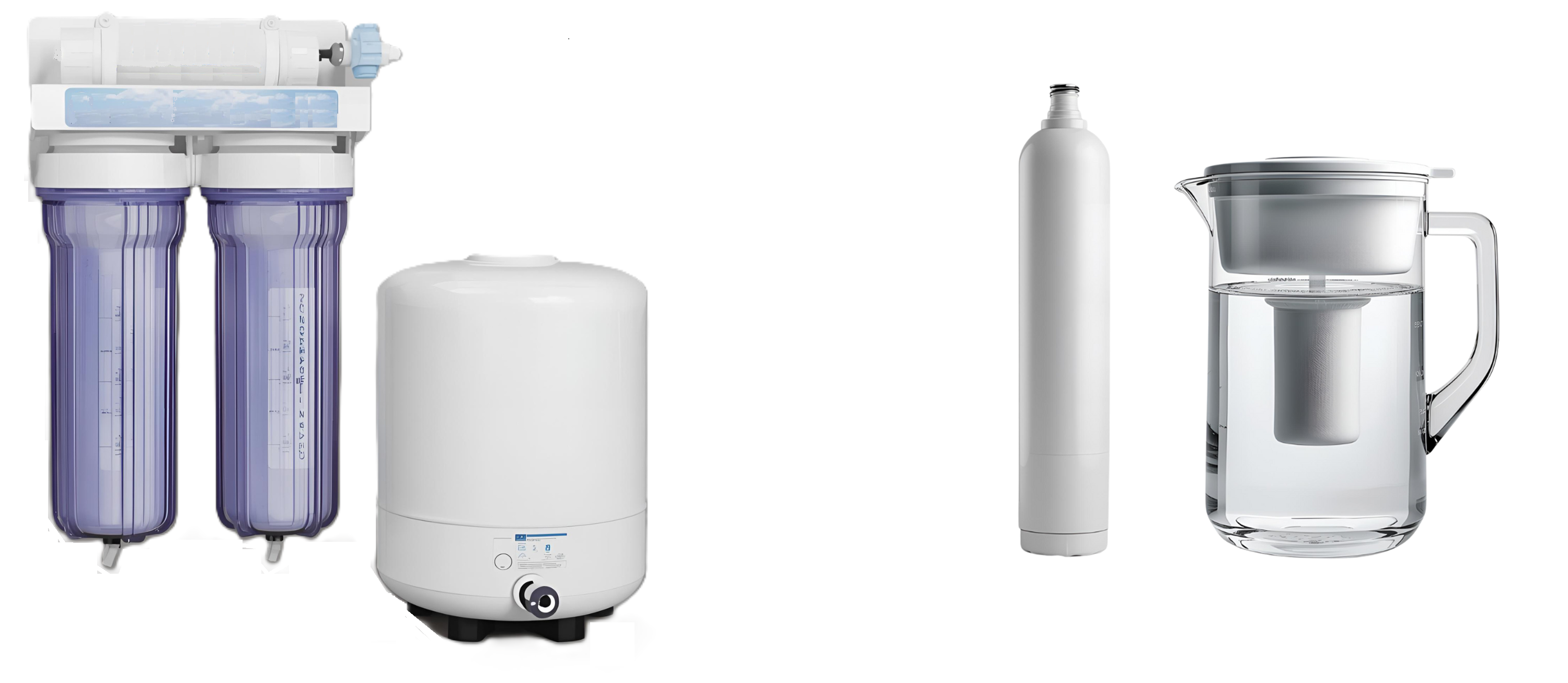What type of tap water filter is best for my home?
Should I use a home water filter or is tap water ok to drink directly? Generally, we feel that it is prudent to filter your water at home. If nothing else, it is an extra way of ensuring you're doing everything possible to keep your family healthy. We suggest that you first read or view our water report on your municipality, which will help you to decide the optimal filter type. But given the significant amount of "forever chemicals" or PFAS, found in tap water, not to mention lead, mankind's old enemy, filtering your water is probably a good idea.

Reverse Osmosis (R.O.)
Carbon Block (C.B.)
The Chosen Two
Having analyzed a variety of water filters, Town Water Check feels that two types of filters generally satisfy the challenges of purifying today's residential tap water: 1) Reverse Osmosis (R.O.) and 2) Carbon Block (C.B) filters.
Reverse Osmosis (R.O.) Filter
Eliminates nearly 95-98%, including fluoride
Carbon Block (C.B.) Filter
Eliminates 90%+, leaves fluoride
R.O. vs. C.B.
Reverse Osmosis (R.O.)
R.O. filters out nearly everything by physically blocking particles at an incredibly tiny scale. That's great except there are a few substances such as fluoride, calcium and magnesium which you may not want to completely eliminate. For that reason, many R.O. filters have a re-mineralization stage, but that's not widely available for fluoride, which is important for dental health.
Carbon Block (C.B.)
C.B. removes most of the main contaminants that R.O. does, to well within EPA limits, but generally not to the same degree as R.O. However, C.B. does not remove arsenic, nitrates, radium, and uranium.
Unlike R.O., however, C.B. does leave beneficial fluoride, calcium and magnesium. C.B is often cheaper and more convenient to use, being offered in both pitcher and refrigerator filter format, unlike R.O. which is generally under the sink.
| Reverse Osmosis (R.O.) | Carbon Block (C.B.) | |
|---|---|---|
| Filtration Method | Microscopic holes physically block contaminants, while certain charged particles are blocked. | Contaminants are chemically attracted to the carbon and they are also physically blocked from passing |
| Configuration(s) | Usually under the sink | Usually, a hand-held pitcher or fridge filter. Ensure the filter is carbon block and NSF/ANSI 53 certified |
| Installation | Medium to substantial, $300-$600 | Light, $45-$60 for pitcher or fridge filter setups. Under the sink models are more expensive. |
| Maintenance | Medium – multi-filter system with filters needing changing every 6-24 months. | Light – simple replacement |
| Heavy Metal Elimination | Typically 95-98% | Not carbon block's strongest point. Typically 60–90% reduction, > 90% only with NSF/ANSI 53 lead-reduction certification. |
| PFAS/Forever Chemicals Elimination | Typically 95-99% | Typically 70-95%, depending upon configuration. |
| Other Contaminants | Eliminates nearly everything except the water | Eliminates most contaminants, but not arsenic, nitrate, unless specified |
| Retains Fluoride & other helpful minerals | No. However, calcium & magnesium can be restored with a re-mineralization stage, but not fluoride. | Yes, including calcium, magnesium and potassium. |
| UV Light for Biological Contaminant Elimination | Many R.O. filters can include a UV light. | Only in under the sink models. |
| Ice Filtration | Space permitting, a line can be run from the R.O. filter to the freezer water source | Easily accomplished with fridge filter configuration |
| Suggested Certification | NSF/ANSI 58 | NSF/ANSI 53 (health) & NSF/ANSI 42 (aesthetics, i.e. taste & odor). |
Additional Recommendations
As an extra, you may want an R.O. or C.B. filter with a UV light for killing any remaining microbes.
Being independent citizen advocates, we don't recommend individual brands, but we do suggest that your selected filter has certifications NSF/ANSI 58 for R.O. or NSF/ANSI 53 for C.B.